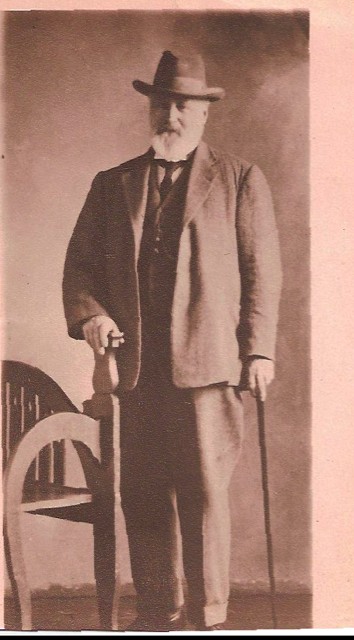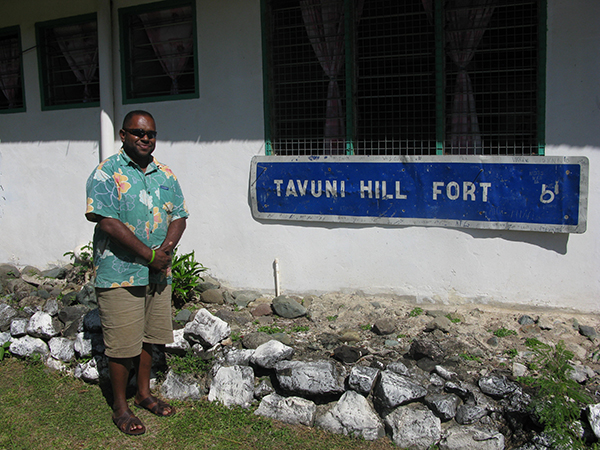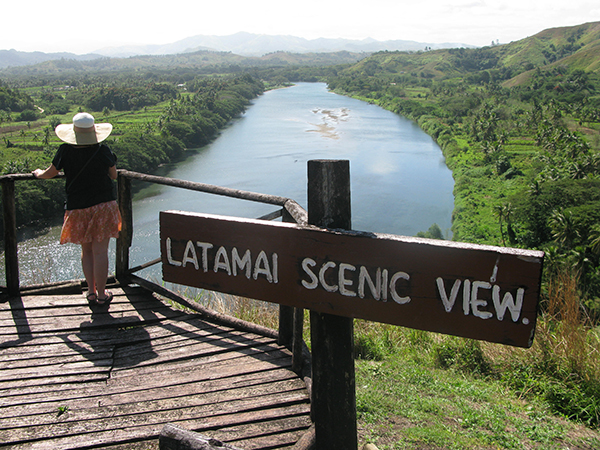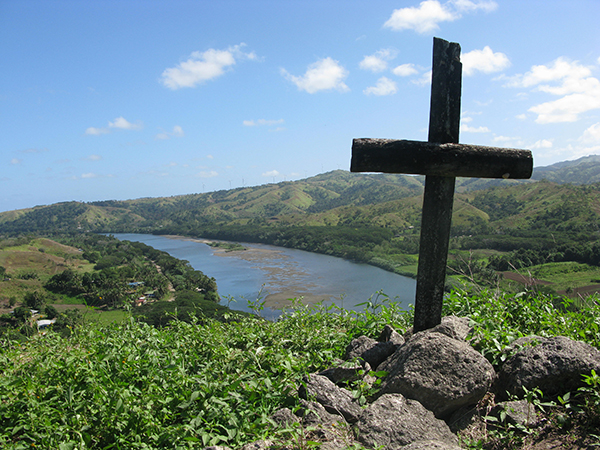
Bula from Suva! Alexi and I arrived in Fiji several days ago and have been very busy since then. We were in Sigatoka (say “Singatoka”) for most of the week and saw and learned some amazing things there. (Warning this is a fascinating but roundabout story. Nothing is direct in the making of Fiji Time!)
First, a little background information for those of you who don’t know Fiji or Alexi’s great-great-grandfather’s story. The Sigatoka River is the second biggest river in Fiji. The town of Sigatoka is situated on the mouth of the river with lovely views out onto the flowing waters. Nearby the town is Fiji’s first national park, the Sigatoka Sand Dunes, which comprises a large area of verdant rolling hills and ravines reaching out to the sea where they turn into sandy beach. Alexi and I hiked the pretty trails there, and, more importantly for the film, we spoke to the helpful and informative park rangers who gave us some leads on exploring Sigatoka history.

About that history, Alexi’s great-great grandfather George Henry Lee came to Fiji from England (after stopping in New Zealand and the Maori Wars there) in the late 19th century to make his fortune. Upon arriving in the former capital of Levuka, he bought property in the Sigotoka Valley sight unseen. We don’t know exactly where his plantation was but we do know an important fact: G.H. went to gaol (“jail” for you Americans) for shooting a native Fijian schoolteacher named Enoki who walked across his property. We know the facts of this story because we have copies of the original court transcripts from the case. We know that G.H., in his colonial mindset, had indignation that turned to rage toward the local Fijians. He was upset because loose pigs from a nearby village had gotten into his crops and because locals regularly walked across his land on the way to the river. One dark day Enoki unluckily became the target of G.H.’s rage, but fortunately, he was only injured and not killed. Later, G.H. was shocked when he was arrested and the colonial judge threw the proverbial book at him and he was imprisoned for his crime.

A good story, indeed, but where did it happen? That was our quest in Sigatoka, to find the (literal) scene of the crime. All we know from the documents is that Enoki taught school at a village called Naqutunhu. So we came to Sigatoka town and started asking around if folks knew the place. Well we asked and asked, and nobody had heard of the place. The rangers at the sand dunes gave us some general information, but no real leads. Next, we went to see the historic Tavuni Hill Fort, to see this important site and to talk to one of the guides there, who we heard was from the nearby village.

About the fort (yes-this is another sidetrack), a Tongan chief named Maile Latamai Finauwas, tired of fighting his enemies in Tonga, got his entourage together and sailed to Fiji. Upon arriving near Sigatoka, he found himself equally unpopular with the locals, so he moved upriver and built a fort on a hill at Tavuni. From this location he fought the British as part of a group of inland islanders who resisted colonial settlement and the cession of lands (These were the Kai Colo Wars, or “Gordon’s Little War”-read more here: http://www.fijitimes.com/story.aspx?id=229681).

The Tavuni Hill Fort is an amazing archeological site with lovely views down to the Sigatoka River below. When we asked the guide there, Basi (say “Mbasi”) about our search for Enoki’s village of Naqutunhu, he said he didn’ t know the name, but he said that there was a village further upriver named Nawamagi with a school and that Enoki was perhaps a family name in that town.
We drove up to the school and talked to the headmistress Loata. She didn’t know the story, had never heard the name Enoki, and the school wasn’t old enough to be the place. However, while she didn’t know a place named Naqutunhu, she did know a place with the similar name of Naqutugutu and said her cousin lived there! She took us to a nearby spot on the river and pointed us across the water. “There is a vocational center and behind the mango tree next to it is a small settlement named Naqutugutu. My cousin is there.” Great! We drove back to Sigatoka, crossed the river, and drove upriver on the other side.

Well, at first we couldn’t find the vocational center or the settlement. But we did find Nakalavo, which we heard is where Sir Arthur Gordon had a group of native rebels executed for fighting against the British around the time of G.H.’s arrival in Fiji. G.H. mentioned this story in his legal testimony, so maybe this was near where he settled.
Of course, there was no one in Nakalavo who knew anything. A woman told us to go to the nearby village of Naduri and talk to the pastor. We drove there. We talked to the pastor. He didn’t know anything (but was very friendly!). I asked if there were any elders in the village to talk to. He took me behind a house where a wonderfully aged man was sitting on the grass peeling cassava. He spoke no English but told the pastor in the local dialect of Fijian that Naqutugutu was indeed near the vocational center and that we had to go back down the gravel road that we had come up.

Long story short, (!) we finally found the vocational center where a young Japanese man (Wasn’t expecting that! Turns out he works for a Japanese NGO) introduced us to the director. The director told us that the vocational center sat on freehold land and used to be owed by a European (Freehold land is land that can be bought and sold as opposed to native land, which can only be leased). He showed us a property map from the 1930’s with the previous owner’s name on it. It wasn’t Alexi’s great-great-grandfather, but, of course, this was 50 years later. The fact that this had been white settler land told us that we were getting close.
When we told the director that we were looking for Naqutugutu he told us, “It’s right outside our property. Go out the gate, turn left and that’s the place.” We followed his directions and turned down a mud path into the woods. It quickly dead-ended at a modest abode at the end of the world. No adults were around but several children were hovering about. “Bula!,” we called out. A man appeared from somewhere looking very surprised to see an unfamiliar car drive up. We told him our story and he became intrigued. “A very interesting story!”

He told us that he was the former mayor of Sigatoka (!) but that he was retired from politics. He said that this was his family land going back many generations and that he was trying to establish an herb farm on the land. He said that his ancestors were early Christian converts and that they had helped Gordon fight against the rebels in the Kai Colo wars. He didn’t know the story of G.H. or Enoki, but he was very interested in it. When we told him that the spelling of the place name on the original document was Naqutunhu, he said that that was the original name of Naqutugutu—so this was the place were Enoki taught school! He took our email address and phone number and said he would do some research and ask around about G.H. and Enoki’s story. He promised us he would get back to us with more information.
Meanwhile, we are in Suva now and I will go to the Fiji National Archives on Monday and try to find the exact location of G.H.’s property. This story is unfinished. Stay tuned!
